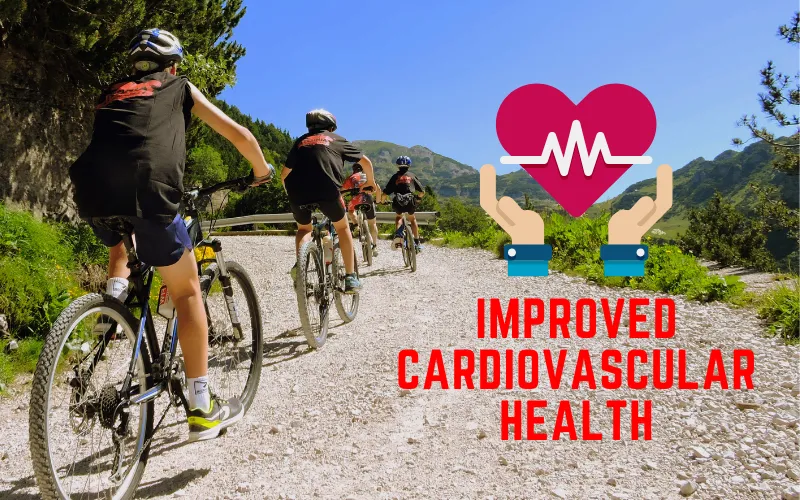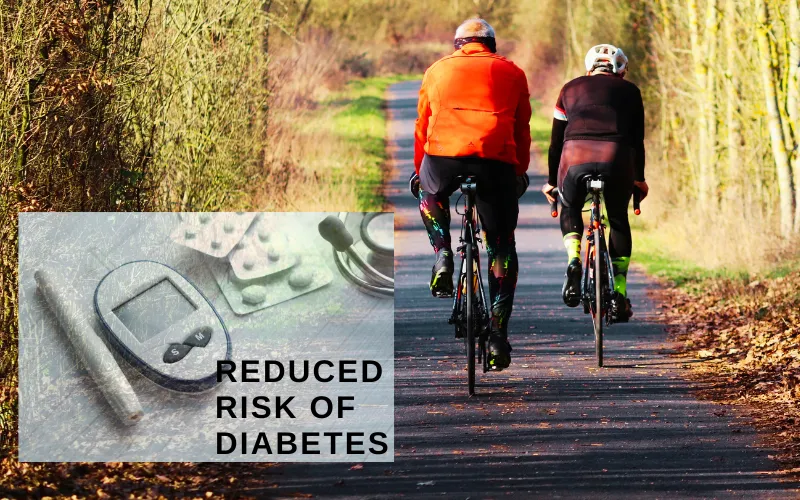Bicycling has grown in popularity as both a mode of transportation and a form of exercise. With the introduction of electric bikes, such as electric city bikes, foldable electric bikes and electric mountain bikes, more people are enjoying the benefits of biking than ever before. One of the biggest benefits of regular biking is improved mental and physical health.
6 Surprising Ways Bicycling Can Benefit Your Well-being
1) Improved Cardiovascular Health
Cycling helps to strengthen the heart and increase blood flow throughout the body, reducing the risk of heart disease. Regular bicycling can help lower blood pressure by up to 12 mmHg for diastolic pressure and 6 mmHg for systolic pressure. It can also improve cholesterol levels and increase cardiovascular fitness, making it an excellent option for maintaining heart health.

A 2019 study found that people who regularly cycled to work saw an average cardiorespiratory fitness increase of 3.56 ml O2/min/kg. It also demonstrated that the cardiovascular benefits of cycling outweigh the risks of increased exposure to air pollutants in urban areas.
2) Reduced Risk of Diabetes
Cycling can help reduce the risk of other chronic diseases, such as diabetes. Regular exercise can help individuals manage their blood sugar levels, reducing the need for insulin and non-insulin antihyperglycemic agents and minimizing the risk of developing type 2 diabetes.
Taking up cycling may also be beneficial for people who already have diabetes. A 2021 study found that people with diabetes who cycled had a 24% lower mortality rate than those who did not cycle.

3) Increased Muscle Strength and Endurance
Bicycling targets various muscles in the body, including those in the legs, core, and upper body. Although not a weight-bearing exercise, cycling uses resistance to generate kinetic energy. Consistent cycling using your body weight as resistance can lead to increased muscle strength and endurance. Stronger leg muscles can improve mobility and make it easier to perform daily tasks, while a well-developed core can help maintain proper posture and alleviate back pain.
Riding a bike is also an excellent low-impact activity to improve physical stamina. A 2019 study found that increasing your stamina and endurance only takes 2 to 4 hours of weekly cycling.
To increase your endurance through cycling, start with shorter, easier rides and gradually increase the distance and duration of your rides over time. Aim to increase your mileage by no more than 10 percent per week to avoid overtraining and injury.
4) Reduced Stress and Improved Mental Health
Exercise, including bicycling, has been shown to reduce stress and anxiety. Regular physical activity can release endorphins, which are natural mood elevators and can help decrease the risk of depression.
For example, a 2020 study found that individuals who engage in regular exercise, such as cycling, experience reduced levels of anxiety and depression. Those who practiced strength training and aerobic exercises saw the most improved mood and overall mental health.
Spending time in nature, such as cycling in natural settings like parks or trails, can provide additional mental health benefits by allowing individuals to connect with nature and enjoy a sense of tranquility. A 2022 article highlighted previous research that found that nature-based interventions (NBI) that enable people to spend time outdoors can lead to benefits such as stress reduction and improved cognitive and emotional functioning.
Beyond the release of endorphins, cycling can also stimulate the production of brain-derived neurotrophic factor (BDNF), a protein that promotes the growth and maintenance of nerve cells. Increased BDNF levels have been linked to improved cognitive function, memory and learning. Regular cycling can support overall brain health and cognitive function for those who build it into their routines.
5) Weight Loss and Management
Bicycling can be an effective tool for weight loss and management. Depending on the intensity and duration of the ride, cycling can burn a significant number of calories, contributing to overall weight loss.
For example, cycling at least 10 mph for 30 minutes can burn around 145 calories, while going the same speed for an hour can burn 290. Similarly, the number of calories burned can depend on the rider’s weight. Going less than 10 mph, a 130 lb person may burn around 236 calories, while a 180 lb. person might burn 327. This number increases the faster and more intensely your ride.

Bicycling can help build muscle, which can increase the body’s metabolism. This can make it easier to burn calories and maintain a healthy weight. Tips for using bicycling as a weight loss and management tool include incorporating interval training into rides, cycling at a moderate to high intensity, and tracking progress to stay motivated.
Regular physical activity can promote the use of stored fat for energy, reducing overall body fat percentage. As you build muscle through cycling, your resting metabolic rate may increase, allowing you to burn more calories even when not exercising.
This combination of fat reduction and muscle growth can lead to a more toned and fit appearance, contributing to overall body confidence and self-esteem.
6) Improved Balance and Coordination
Cycling can improve balance and coordination, particularly in older adults. Riding on a bicycle or e-bike requires the rider to continuously adjust their balance and coordinate movements to navigate turns, maintain a steady speed and avoid obstacles.
These balance-maintaining movements help to strengthen the muscles responsible for coordination, including the hamstrings, quadriceps, and glutes. Coordination-based activities like cycling can improve overall proprioception or the body’s awareness of its position in space.

Proprioception is important for everyday activities like walking and standing, as it helps maintain balance and prevent falls. Activities that challenge and improve proprioception, like cycling, can help to reduce the risk of falls and improve overall mobility in daily life.
Research has shown that engaging in balance and coordination activities can also help reduce fall risk for those with neurological disorders. A 2019 review found that exercise interventions reduced the frequency and fatality rate of falls for those with neurological conditions such as Parkinson’s disease and dementia.
Try Cycling for a Healthier, Happier Life
Cycling offers many health benefits that can contribute to a healthier and more active lifestyle. With the availability of various types of refurbished electric bikes to choose from, such as hybrid, road, cargo, mountain and foldable electric bikes, you can easily incorporate cycling into your daily life and discover a newfound passion for this enjoyable and rewarding form of exercise.




